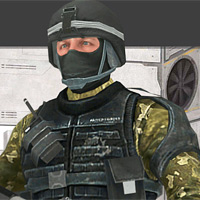
IDF's LASHAB was developed mainly in recent decades, after the 1982 Lebanon War included urban warfare in Beirut and Lebanese villages, and was further developed during the Second Intifada (2000–2005) in which IDF soldiers entered and fought in Palestinian cities, villages and refugee camps. LASHAB in the IDF includes large-scale tactics (such as utilization of heavy armoured personnel carriers, armoured bulldozers, UAVs for intelligence, etc.), CQB training for fighting forces (how a small team of infantry soldiers should fight in close and built-up spaces). Israel Defense Forces calls urban warfare לש"ב (pronounced LASHAB), a Hebrew acronym for warfare on urban terrain. The term FOFO (fighting in fortified objectives) refers to clearing enemy personnel from narrow and entrenched places like bunkers, trenches and strongholds the dismantling of mines and wires and the securing of footholds in enemy areas. The British armed forces terms are OBUA (operations in built-up areas), FIBUA (fighting in built-up areas), or sometimes (colloquially) FISH (fighting in someone's house), or FISH and CHIPS (fighting in someone's house and causing havoc in people's streets).

Historically, the United States Armed Forces has referred to urban warfare as UO (urban operations), but this term has been largely replaced with MOUT (military operations in urban terrain). JGSDF soldiers practice MOUT tactics in the Ojojibara Maneuver Area of Sendai, Japan during an exercise in 2004 Tactics are complicated by a three-dimensional environment, limited fields of view and fire because of buildings, enhanced concealment and cover for defenders, below-ground infrastructure, and the ease of placement of booby traps and snipers. Some civilians may be difficult to distinguish from such combatants as armed militias and gangs, and particularly individuals who are simply trying to protect their homes from attackers. Ambushes laid down by small groups of soldiers with handheld anti-tank weapons can destroy entire columns of modern armor (as in the First Battle of Grozny), while artillery and air support can be severely reduced if the "superior" party wants to limit civilian casualties as much as possible, but the defending party does not (or even uses civilians as human shields). įighting in urban areas negates the advantages that one side may have over the other in armor, heavy artillery, or air support. Urban combat operations may be conducted to capitalize on strategic or tactical advantages associated with the possession or the control of a particular urban area or to deny these advantages to the enemy. Complicating factors in urban warfare include the presence of civilians and the complexity of the urban terrain.



Urban combat differs from combat in the open at both the operational and the tactical levels. Urban warfare is warfare in urban areas such as towns and cities.


 0 kommentar(er)
0 kommentar(er)
